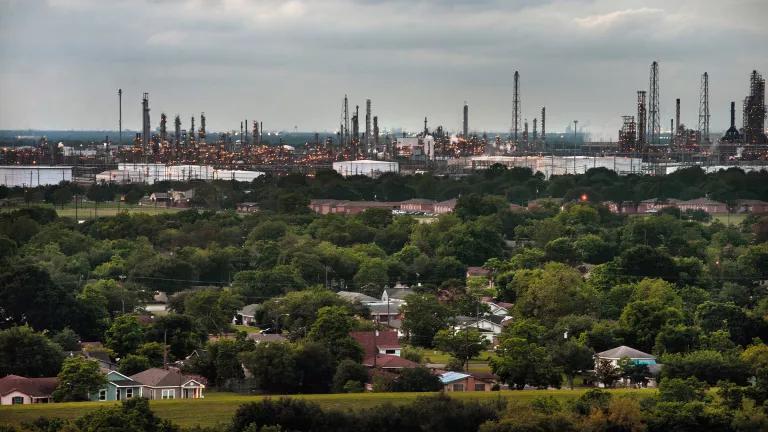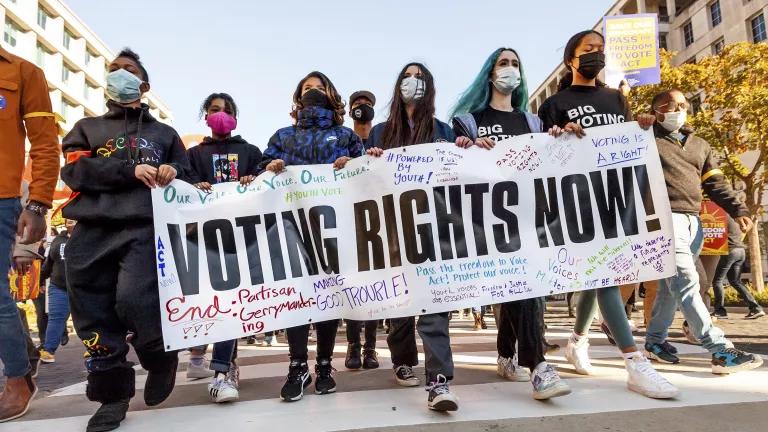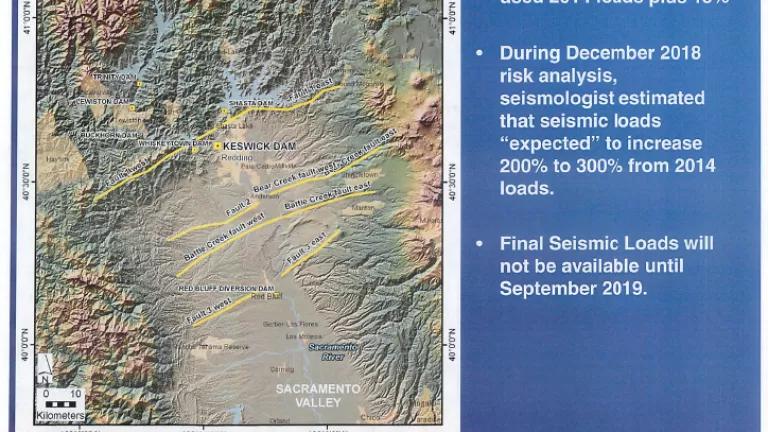To Defend NEPA, Coalition Takes Trump Administration to Court

The National Environmental Policy Act enables local communities to protect their health and the environment from polluting projects.
Environmental and environmental justice groups—represented by NRDC attorneys and joined by other civil rights and environmental organizations—sued the Council on Environmental Quality (CEQ) today for gutting the National Environmental Policy Act, the bedrock law that requires government transparency, thorough environmental reviews, and public input before approving major federal projects like pipelines and oil refineries.
“NEPA gives us all a voice,” says Sharon Buccino, senior director of lands for NRDC’s Nature Program. “Given the crises our nation is facing, we cannot ignore the risk of more pollution, nor the voices of communities of color.”
The CEQ’s weakening of NEPA will most directly impact low-income communities and Black, Indigenous, and Latino communities, who have long faced disproportionate levels of pollution due to industrial facilities in or near their neighborhoods. “The Trump administration’s assault on democracy undermines our ability to fight egregious projects and gives industry free rein to put pipelines through our backyards or incinerators near our schools,” says Michele Roberts, national co-coordinator of the Environmental Justice Health Alliance.
Signed into law 50 years ago, NEPA offers a straightforward process for vetting potentially destructive infrastructure projects: The federal government must consider the environmental impacts of its major actions and then put that assessment out for public review and comment. This framework mandates that the government consider alternatives before approving, say, a new chemical manufacturing facility that could taint local drinking water supplies. But under the latest changes finalized this July, a large swath of projects would no longer be considered major enough to fall under NEPA’s purview.
Under the revised law, the environmental assessments would no longer need to address “cumulative” or “indirect” environmental impacts, significantly limiting their scope. In practice, this means that developers of, say, a liquified natural gas plant would only need to disclose the emissions from constructing and operating the plant itself—but when deciding whether to even conduct an environmental review, they could overlook how those emissions combine with pollution from other nearby facilities to increase already unacceptable pollution levels. The revisions would also allow the developers of a dirty-fuel pipeline to ignore the indirect climate impacts of burning the fuel that a pipeline transports. “Removing cumulative impacts from NEPA is almost tantamount to removing environmental justice from NEPA,” says Dr. Nicky Sheats, a founding member of the New Jersey Environmental Justice Alliance.
The new rule would also limit the obligation of agencies to address the future climate change impacts of their decisions—undercutting congressional directives to look ahead in order to prevent avoidable disasters. “What is best for big business and Washington lobbyists is rarely what is best for local communities,” says Yvette Arellano, a grassroots advocate for Texas Environmental Justice Advocacy Services. “Putting blinders on instead of listening to communities when planning projects that affect us is irresponsible and dangerous. In Houston and the Gulf Coast, we face deadly and destructive hurricanes. Ignoring climate change threatens our lives.”
Led by the Environmental Justice Health Alliance, the parties—the Environmental Justice Health Alliance, Texas Environmental Justice Advocacy Services, East Yard Communities for Environmental Justice, New Jersey Environmental Justice Alliance, Center for Community Action and Environmental Justice, National Audubon Society, NRDC, the Sierra Club and the New York Civil Liberties Union—filed the case in the U.S. District Court for the Southern District of New York.
The grassroots groups within the coalition have long worked to protect vulnerable communities from the disproportionate and cumulative health hazards of industrial pollution, as demonstrated by a recent report from the Environmental Justice Health Alliance.
The New Jersey Environmental Justice Alliance continues to push for more sustainable ports, particularly in the state’s shipping hubs of Newark and Elizabeth, while the Texas Environmental Justice Advocacy Services organizes to improve safety measures at the thousands of chemical facilities concentrated in the state.
The Center for Community Action and Environmental Justice has a history of effective policy-oriented organizing, including current campaigns to protect its members from air pollution from rail and warehouse operations. “Given the challenges of racial injustice and the COVID pandemic, we need our government to do more to build a healthier society for all of us,” said Italia Garcia, the organization’s interim executive director.
The Los Angeles–based East Yard Communities for Environmental Justice offers training and workshops for residents on how to best participate in decision-making processes that impact their health and well being—processes which are often defined and protected by NEPA. “We’ve been fighting polluters from day one, sometimes with the help of our government and sometimes in opposition to it,” says Taylor Thomas, the group’s research and policy analyst. “We need the law to work for each of us—not for the interests of polluting industries.”



